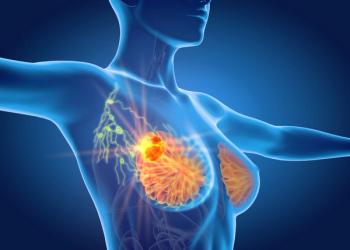
- Oncology Vol 28 No 4_Suppl_1
- Volume 28
- Issue 4_Suppl_1
(S045) Breast Conservation Therapy in Early-Stage Female Breast Cancer Patients Aged Less Than 40 Is Not Inferior to Mastectomy: A Surveillance, Epidemiology, and End Results Data Analysis
We aim to examine the difference between outcomes in young women (aged < 40 y) treated with breast-conserving therapy consisting of partial breast surgery and radiation therapy vs mastectomy.
Jason C. Ye, MD, Paul Christos, DrPH, MS, Weisi Yan, MD, Dattatreyudu Nori, MD, MBBS, Kun-San C Chao, MD, Akkamma Ravi, MD, MBBS; New York Hospital Queens; New York Presbyterian Hospital; Weill Cornell Medical College
Purpose: Breast-conserving therapy (BCT) consisting of partial breast surgery and radiation therapy allows for sparing of the normal breast tissue and results in better cosmesis and fewer side effects, such as lymphedema, in patients with early-stage breast cancer. However, young patients tend to receive mastectomy as surgical treatment. We aim to examine the difference between outcomes in young women (aged < 40 y) treated with BCT vs mastectomy.
Methods: The Surveillance, Epidemiology, and End Results database was queried for women aged less than 40 years diagnosed with stage I or II invasive breast cancer who underwent breast conservation surgery or mastectomy from 1998–2003. Cause-specific survival (CSS) was evaluated by Kaplan-Meier survival analysis, and the log-rank test was used to compare CSS between treatment categories of interest. Multivariable Cox regression model analysis was performed to estimate the predictors of CSS. Adjusted hazard ratios (AHRs) and 95% confidence intervals (95% CIs) were calculated for risk of breast cancer-related death.
Results: The analysis included 9,686 patients with a median follow-up (based on survivors) of 111.0 months (range: 0.10–155.0 mo). Overall, patients with stage I or II breast cancer who received BCT (lumpectomy + radiation) had a noninferior 10-year CSS than patients who had mastectomy but no radiation (87.9%; 95% CI, 86.7%–89.0% vs 84.5%; 95% CI, 83.4%–86.0%; P < .0001 by log-rank test). Stage I patients who had BCT had a 10-year CSS of 92.9% (95% CI, 91.5%–94.1%) vs mastectomy CSS of 90.2% (95% CI, 88.4%–91.8%) (P = .001). Stage II patients who had BCT had a 10-year CSS of 82.9% (95% CI, 80.9%–84.7%) vs mastectomy CSS of 81.0% (95% CI, 79.0%–82.8%) (P < .0001). Estrogen receptor (ER)-positive patients who had BCT had a 10-year CSS of 89.6% (95% CI, 88.0%–91.0%) vs mastectomy CSS of 86.9% (95% CI, 85.0%–88.6%) (P < .0001). ER-negative patients who had BCT had a 10-year CSS of 85.7% (95% CI, 83.6%–87.6%) vs mastectomy CSS of 81.6% (95% CI, 79.1%–83.9%) (P < .0001). Stage II disease (AHR = 2.08; 95% CI, 1.81–2.39), ER-negative disease (AHR = 1.39; 95% CI, 1.23–1.56), and patients treated with mastectomy + radiation (AHR = 1.37; 95% CI, 1.11–1.70) were independently associated with worse outcome in multivariable analysis.
Conclusions: Patients aged 40 years and younger with stage I and II invasive breast cancer treated with BCT had noninferior CSS than mastectomy, regardless of ER status. Our data suggest that young age and/or ER status is not a contraindication to BCT in early-stage breast cancer patients.
Proceedings of the 96th Annual Meeting of the American Radium Society -
Articles in this issue
Newsletter
Stay up to date on recent advances in the multidisciplinary approach to cancer.

















































































